If you’re looking to add some vibrant life to your home, terrariums are a great way to do just that. Not only will they bring a touch of nature indoors, but the use of miniature plants makes them quite easy to care for and maintain. In this article, we explore 25 of the best miniature plants for terrariums – so let’s get started!
From nerve plants to peacock ferns and even Venus flytraps, there’s sure to be a plant that suits both your style and needs. With these plants, you can rest assured knowing that they won’t take up too much space or require too much maintenance – giving you all the more time to simply enjoy their beauty.
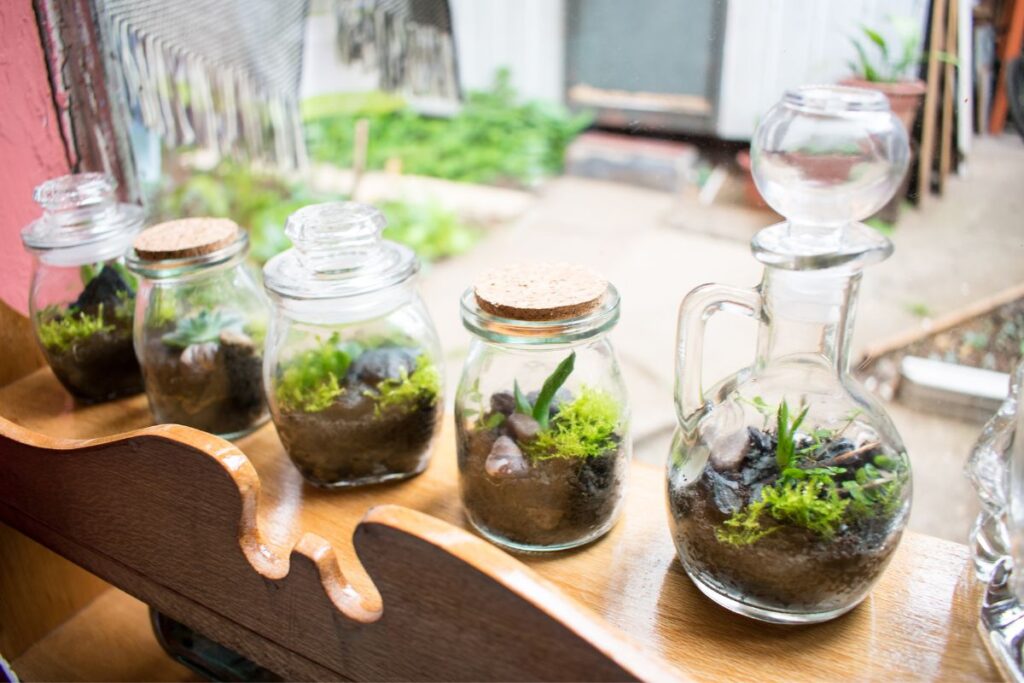
Contents
- 1 25 Best Miniature Plants For Terrariums
- 1.1 Nerve Plant
- 1.2 Peacock Fern
- 1.3 Venus Flytrap
- 1.4 Air Plant
- 1.5 Zebra Plant
- 1.6 String of Turtles
- 1.7 Humata heterophylla
- 1.8 Button Fern
- 1.9 Red Pagoda
- 1.10 Watermelon Dischidia
- 1.11 Strawberry Begonia
- 1.12 False Shamrock
- 1.13 Baby’s Tears
- 1.14 Fluffy Ruffles Sword Fern
- 1.15 Mood Moss
- 1.16 Starfish Plant
- 1.17 Asparagus Fern
- 1.18 Polka Dot Plant
- 1.19 Peacock Plant
- 1.20 English Ivy
- 1.21 Maidenhair Vine
- 1.22 Mother Fern
- 1.23 Aquamarine Pilea
- 1.24 Spider Plant
- 1.25 Miniature Orchid
- 2 Conclusion
25 Best Miniature Plants For Terrariums
Nerve Plant
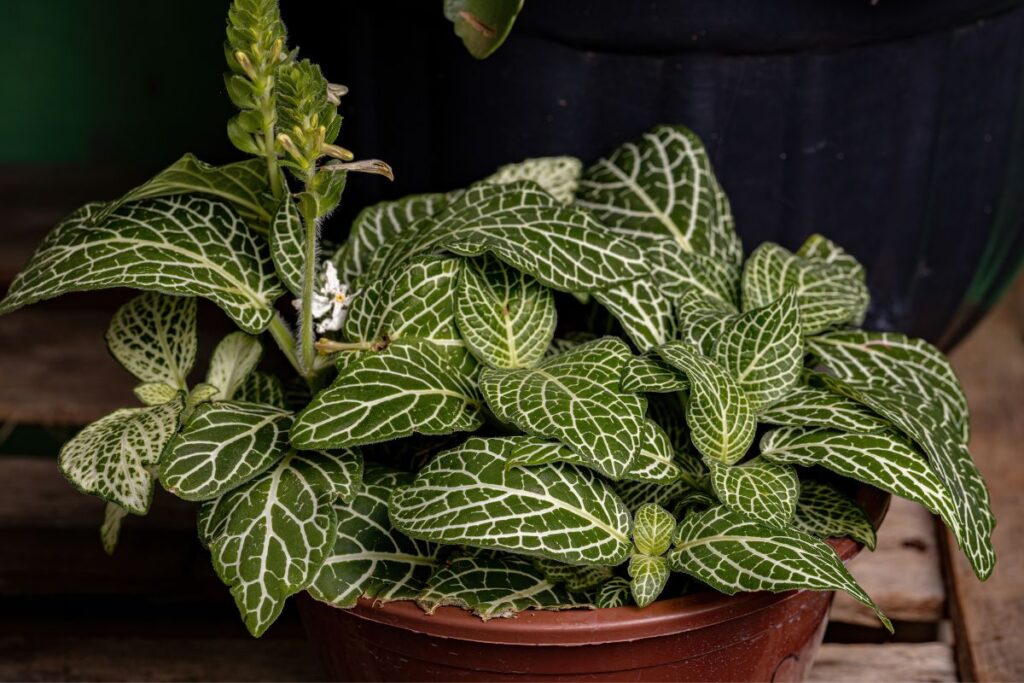
The nerve plant is a great choice for terrariums, as it’s incredibly easy to care for! This delightful tropical evergreen features glossy green leaves with trailing stems that make it an ideal specimen for hanging baskets or window boxes. Its lush foliage will create a beautiful backdrop in your terrarium and provide plenty of photosynthesis benefits. When caring for this plant, fertilizer needs are minimal; however, light requirements should be met by providing bright indirect sunlight throughout the day. When selecting its container, choose one that is not too big so you can easily manage the watering needs and temperature variations. With just these few simple care tips, you can enjoy the beauty of this lovely plant in your terrarium year-round!
Peacock Fern
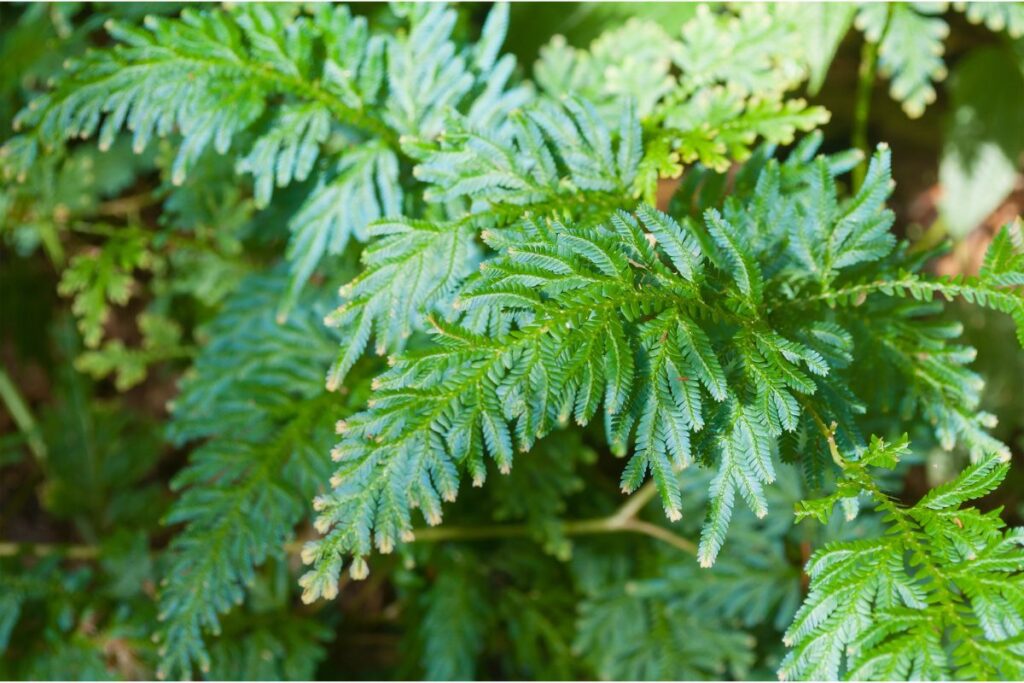
You’ll find the Peacock Fern an ideal choice for your terrarium, its beautiful foliage adding a touch of elegance. This plant is easy to care for; with proper terrarium care, it will remain healthy and vibrant. The benefits of having a Peacock Fern in your terrarium include its ability to reduce toxins from the air, as well as creating a calming atmosphere. Propagating a Peacock Fern is straightforward and Planting one in your terrarium is simple too. There are also several varieties available that you can choose from to fit the style of your terrarium perfectly.
Venus Flytrap
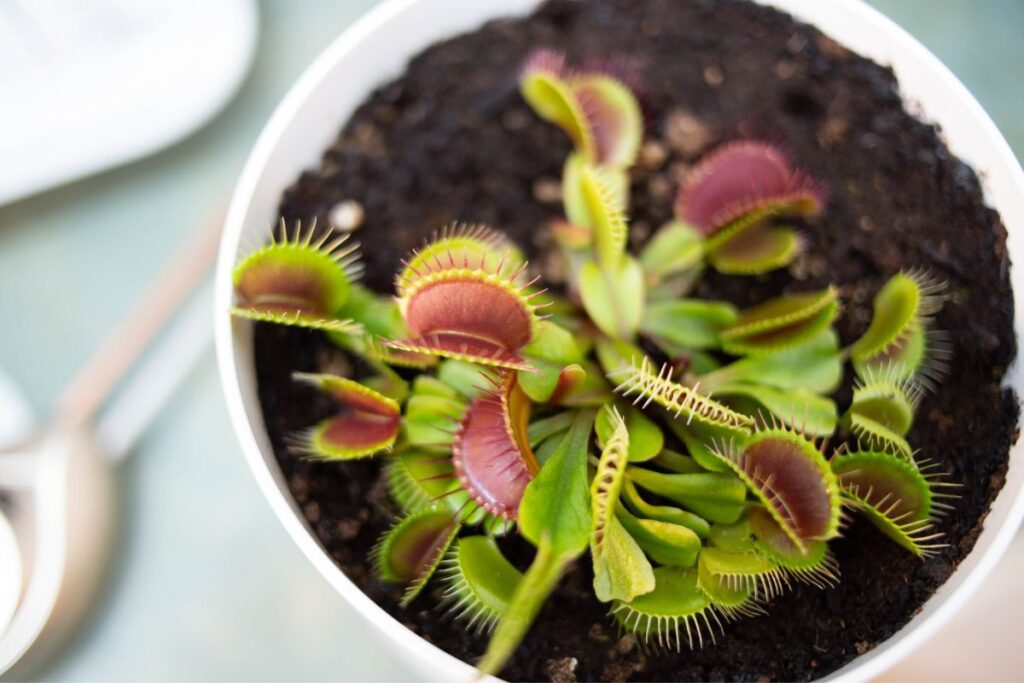
One of the most fascinating plants for any terrarium is the Venus Flytrap, a carnivorous plant that traps and eats insects with its snap-shut leaves. Although they are small enough to fit in any terrarium, their care should not be taken lightly as it requires knowledge of how to provide them with the right environment and nutrition. There are many types of Venus Flytraps, ranging from red-leaved varieties to green ones, each with its own characteristics.
The benefits of having a Venus Flytrap in your terrarium include providing an interesting conversation topic for visitors and potential protection against pests that would otherwise harm other plants. There are also numerous myths surrounding this species of plant which can be debunked by doing research into its care requirements. For those looking to grow more than one Venus Flytrap in their terrarium, propagation techniques such as division or seed sowing can help you achieve your goals!
Air Plant
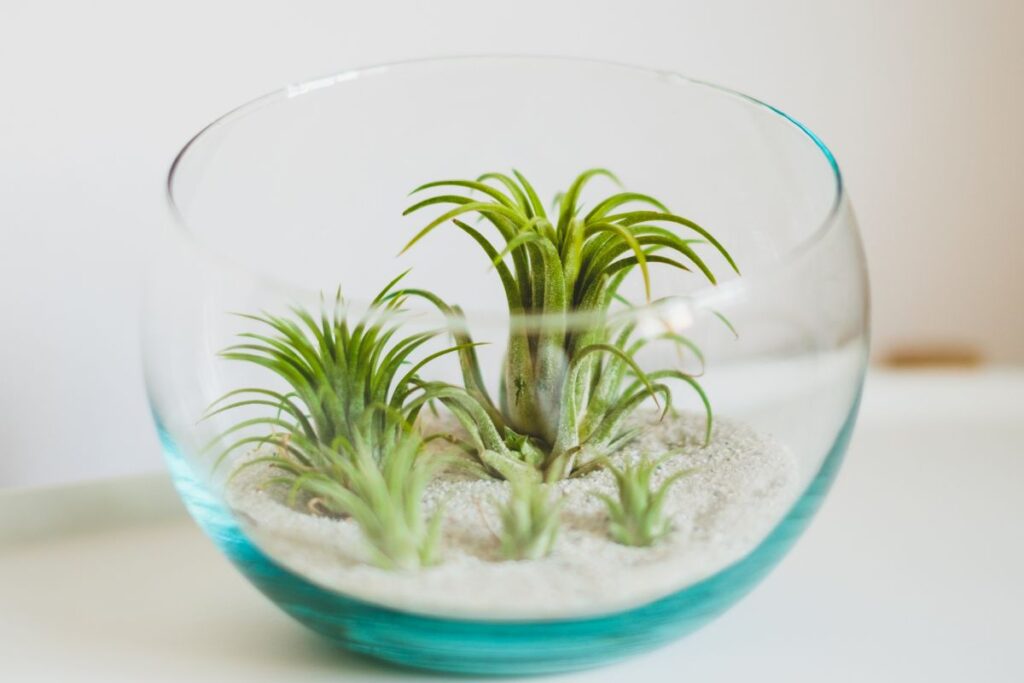
Air plants, often referred to as epiphytes or ‘air ferns’, are a unique type of plant that doesn’t require soil and typically grow without roots attached to any substrate. They make an excellent addition to a terrarium, as they require little maintenance and come in many different sizes. Caring for air plants is relatively simple – they don’t need much more than bright indirect light, regular misting, and occasional soaking. When fertilizing your air plant, use a specially formulated liquid fertilizer diluted to half strength once every two weeks during the growing season.
Propagation techniques such as cutting offsets from the mother plant or separating pups are also easy methods for reproducing air plants. Common issues with air plants include dehydration, over-fertilization, and pests; however, these can be easily avoided with proper care and attention. With just a few basic Air Plant Care tips, you can successfully enjoy these amazing miniature plants in your terrarium!
Zebra Plant
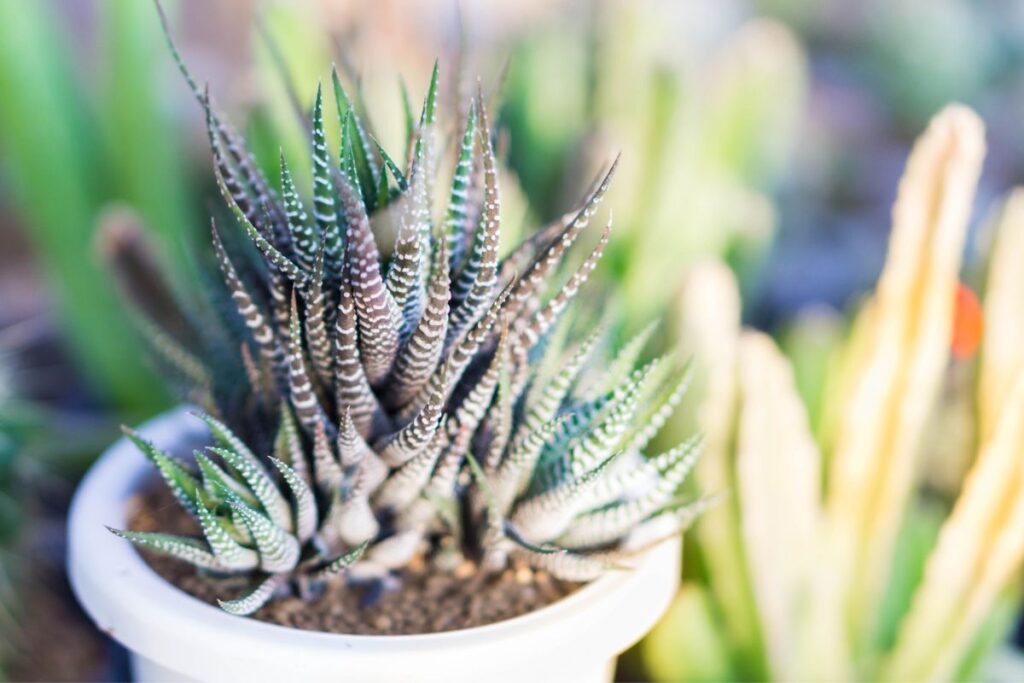
The Zebra Plant’s striking foliage, featuring bold green stripes and creamy yellow centers, adds a dramatic look to any indoor garden. This plant is easy to care for, with minimal watering needs and no special humidity or light requirements. It doesn’t need much soil either; just enough for the roots to be held in place. Propagation techniques are simple too – simply take stem cuttings from mature plants and insert them into moist soil to get new growth. Make sure you don’t overwater them as this can cause root rot. With its low maintenance requirements and beautiful foliage, the Zebra Plant is an ideal choice for terrariums!
String of Turtles
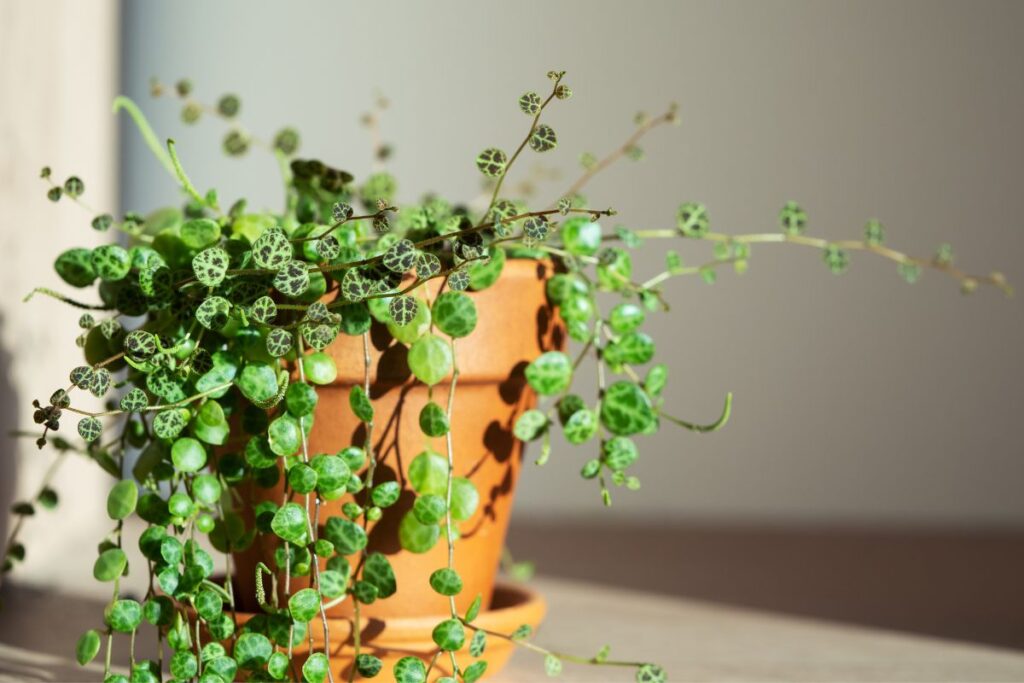
You’ll love the String of Turtles’ eye-catching, round leaves and trailing stems for a unique addition to your home. This petite succulent is easy to care for and grows best in bright indirect light or under fluorescent lights. It’s important to keep an eye on the soil moisture and avoid overwatering, as this can lead to root rot. Propagation is simple; just take stem cuttings from the mother plant and place them in a well-draining potting mix so they can develop roots. Additionally, make sure the temperature remains between 65 – 75 degrees Fahrenheit for optimal growth. Common problems include yellowing leaves, which usually occur if exposed to too much direct sunlight or overwatering. Decorating ideas for this plant include placing it on windowsills, hanging it off shelves, or growing it along walls with trellises or baskets—a great way to add life to any room!
Humata heterophylla
Experience the unique texture of Humata heterophylla’s thin leaves and enjoy its trailing stems, perfect for adding a touch of life to your home. Humata care is relatively easy, however, it does require a specific environment to thrive in. It prefers indirect sunlight and needs soil that is kept moist but not overly saturated. Pruning techniques can help keep it looking neat but should be done with care due to its delicate nature. Propagation tips include taking stem cuttings and transplanting them into new pots filled with well-draining potting mix. With proper care and attention, you can have an attractive mini plant for your terrarium that will bring a bit of life into your living space!
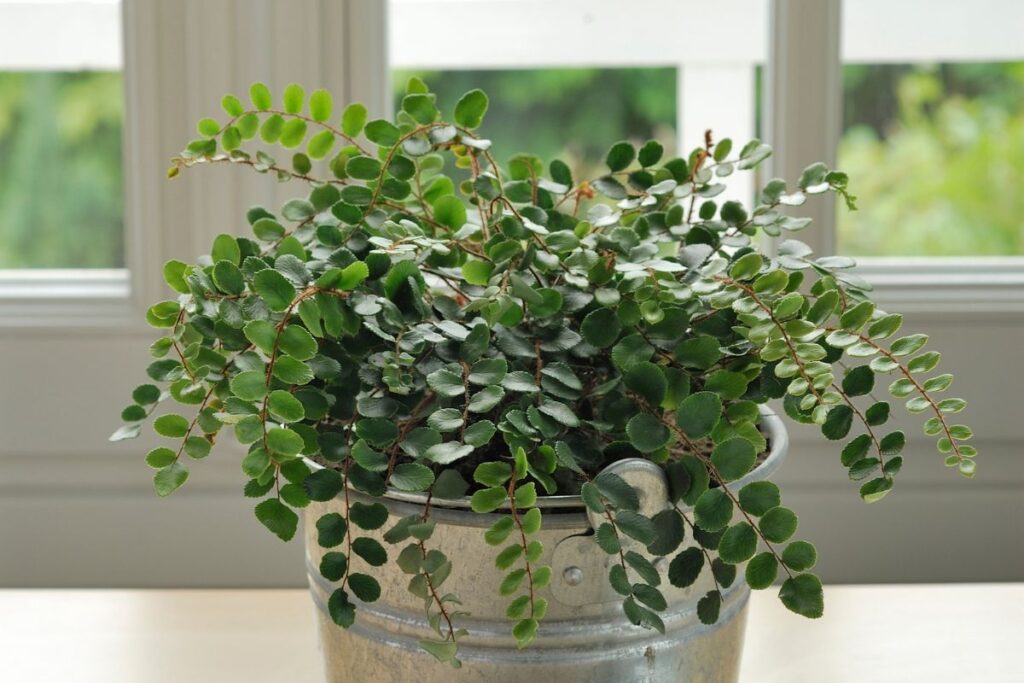
Adorning your home with the lush foliage of Button Fern (Pellaea rotundifolia) will bring a touch of nature’s beauty to any living space. Caring for this plant requires well-draining soil, bright but indirect light, and water frequency that depends on how quickly the soil dries out. When propagating, you can divide a mature specimen or use spores to propagate new plants. With the right care and attention, Button Ferns make excellent additions to terrariums due to their small size and low maintenance requirements.
Red Pagoda
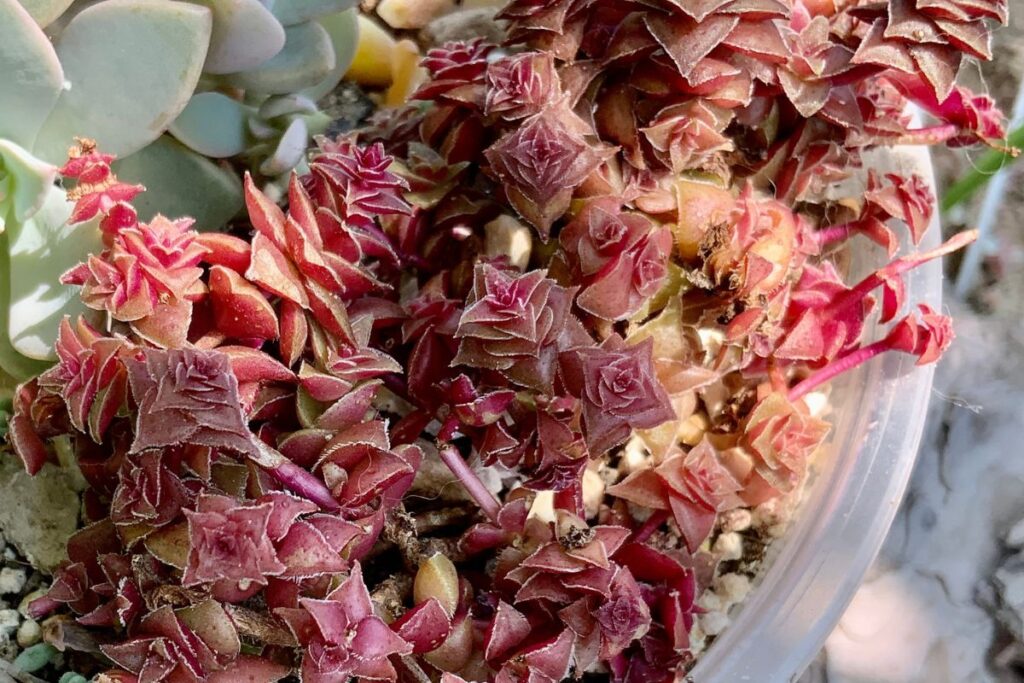
Bringing a vibrant splash of color to any living space, Red Pagoda is a fantastic succulent for those looking for a low-maintenance plant. These plants come with many benefits such as being drought tolerant and requiring minimal pruning, making them ideal for anyone who wants to create their own terrarium. What’s more, they require little in terms of care; just provide plenty of indirect sunlight and keep the soil moist but not soaked. Red Pagoda also boasts an impressive history due to its stunning hues which can range from vivid pink to bright red. This unique coloring makes it ideal for adding an eye-catching element to any indoor garden or terrarium display while also providing a natural air purifier that will help make any living area healthier and more inviting. Ultimately, Red Pagoda is sure to leave a lasting impression on all who witness its beauty and impactful presence in any home or office environment.
Watermelon Dischidia

Adding a unique touch to any space, the Watermelon Dischidia is an ideal succulent for adding vibrant color and texture. While this plant may have slightly higher watering needs than other terrarium plants, its light requirements are not overly demanding. It prefers a soil type that is well-draining and contains organic material. When it comes to potting techniques, be sure to cover the roots with soil but leave some of the stem exposed as this will help promote healthy growth. Propagation methods include division or cuttings which should be placed in water until they develop their own root systems before being planted in soil.
Strawberry Begonia
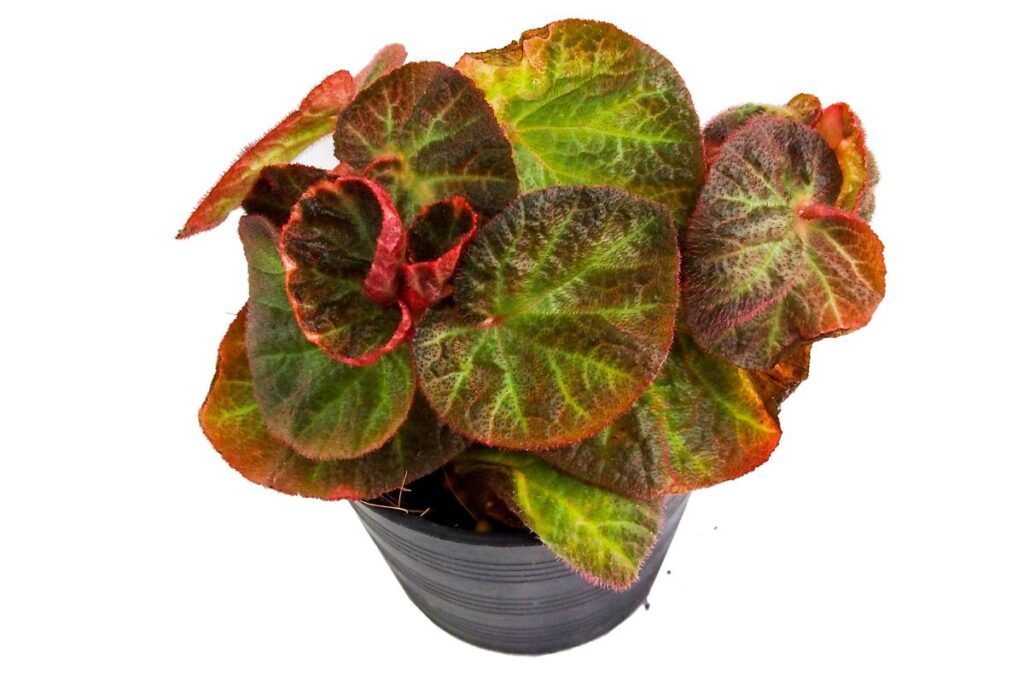
Offering a stunning contrast of red and green foliage, the Strawberry Begonia is an eye-catching succulent for any terrarium. Growing one can be relatively easy, as long as proper care considerations are met. Light requirements should be bright, indirect light. When it comes to soil preferences, use a well-draining potting mix and water only when the top layer has dried out completely. Common issues with this plant may include leaf drops, browning tips or yellowing leaves; however, these can usually be avoided if you’re careful to give your plant just the right amount of water, fertilizer and light. With the right setup and maintenance routine, you will have a beautiful strawberry begonia in no time!
False Shamrock

Boasting an attractive, three-lobed foliage, False Shamrock (Oxalis triangularis) is a great choice for anyone looking to spruce up their indoor space. This miniature plant is easy to care for and requires minimal fertilizing. Its dormant season is during the winter months, so be sure to give it plenty of sunlight in the spring and summertime. When growing your False Shamrock indoors, you’ll want to use a soil mix that drains well and contains plenty of organic matter. With proper care and attention, this beautiful plant can bring life into any terrarium!
Baby’s Tears
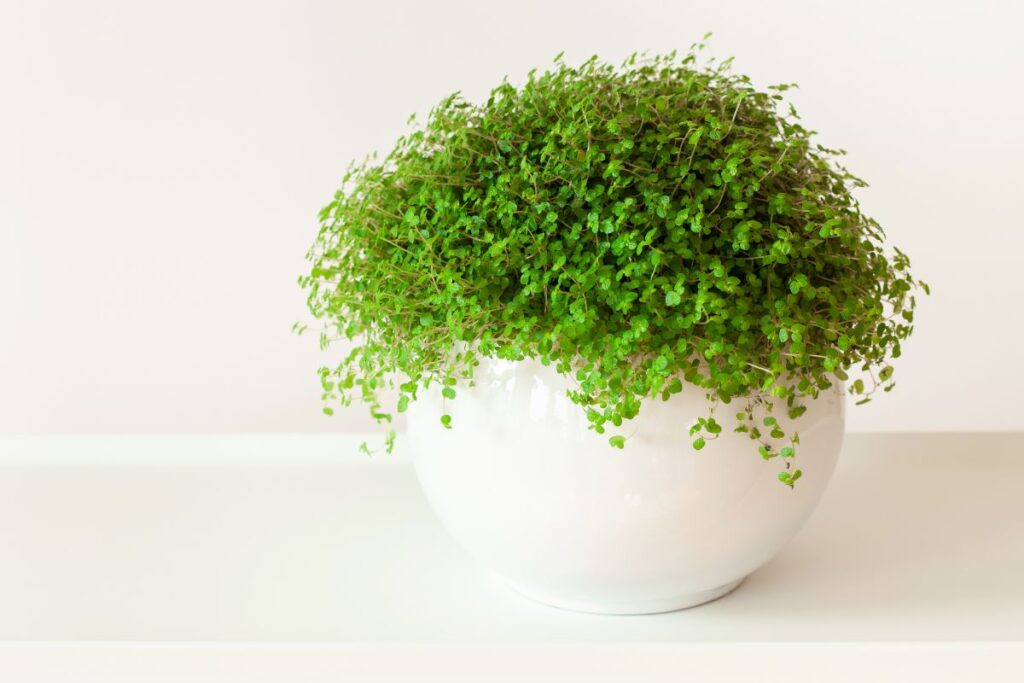
Bring a burst of vibrant greenery to your home with Baby’s Tears, a delightful small-leafed plant. Native to the Mediterranean and Asia Minor regions, this species is an ideal choice for terrariums and other enclosed spaces due to its low maintenance requirements. Its natural habitat consists of moist soil in high-humidity areas, so make sure that when potting it you use well-draining soil that is kept damp but not overly saturated. It likes bright indirect sunlight or partial shade; too much direct sun can cause the leaves to scorch. You can propagate Baby’s Tears using stem cuttings placed in water until they form roots. With its delicate foliage and overall ease of care, Baby’s Tears is a great option for those looking for a miniature plant that will add some lush greenery to their terrariums!
Fluffy Ruffles Sword Fern
Add a touch of the wild to your home with Fluffy Ruffles Sword Fern! This beautiful fern is easy to care for and can add a lush, tropical feel to any terrarium. When choosing the right soil, make sure it’s well-draining as too much moisture can cause root rot. In addition, Fluffy Ruffles needs bright indirect light and warm conditions in order to thrive. For propagation tips, you’ll want to divide and repot the plant every two years or so with new soil. With proper growing requirements like these, Fluffy Ruffles will quickly become a favorite part of your terrarium display!
Mood Moss
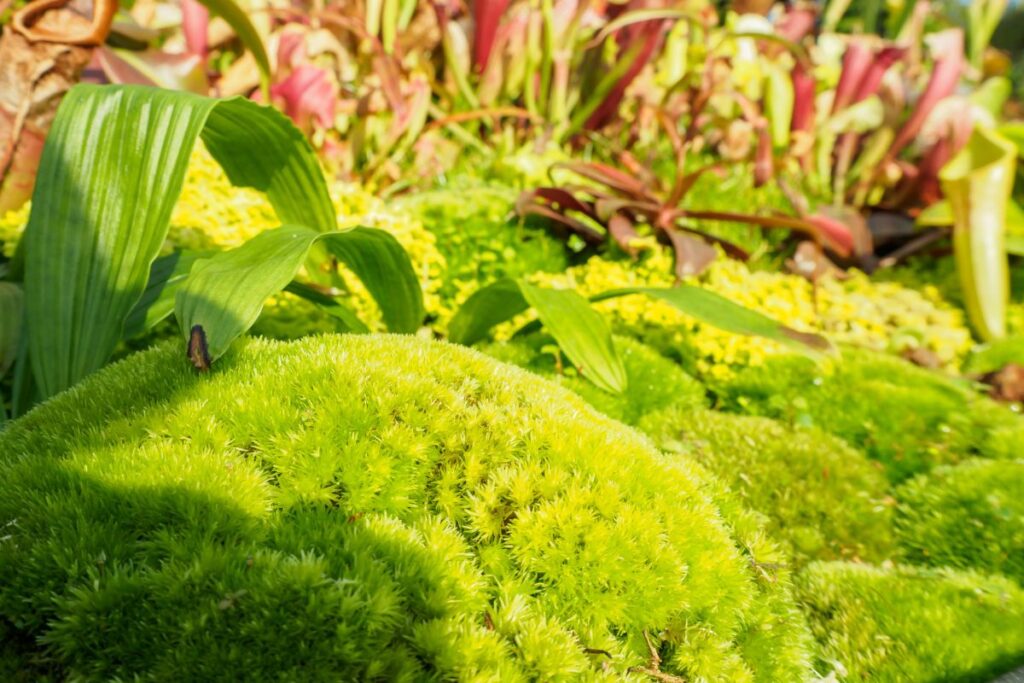
Moving on from the Fluffy Ruffles Sword Fern, Mood Moss is a great option for terrariums. This moss is known for its ability to change color depending on how much light it receives, making it an interesting and dynamic addition to any terrarium. Benefits of Mood Moss include its low maintenance care requirements and versatility in design. When caring for Mood Moss, make sure you provide enough light without too much direct sunlight, as this can be damaging to the moss. Pruning techniques are not necessary with this type of moss but should be done if needed. Propagation methods for Mood Moss involve cutting small pieces of the moss and replanting them into new soil or existing soil in your terrarium. With these tips, you can easily enjoy this beautiful miniature plant in your terrarium!
Starfish Plant

Experience the unique beauty of the starfish plant in your terrarium, with its curious and captivating shape that stands out amongst other plants. This eye-catching plant requires specific care and growing conditions to stay healthy, so make sure you know what they are before introducing it to your terrarium landscape. Starfish Plant care is relatively simple—it prefers bright, direct sunlight and soil that drains well. When propagating this plant, use stem cuttings or offsets from existing plants; both methods should be successful when done properly. In terms of lighting requirements, the starfish plant does best when placed near a south-facing window where it can receive plenty of indirect sunlight throughout the day. With these simple tips in mind, you can enjoy watching this quirky plant thrive in your terrarium!
Asparagus Fern

Bring a touch of the outdoors inside with the Asparagus Fern, a small fern that’s sure to add beauty and texture to your indoor space. To ensure it thrives in its new home, you’ll need to provide it with the proper care. Give it bright indirect sunlight and keep the soil lightly moist for best results. If you’re looking for an easy way to propagate your Asparagus Fern, simply divide any overgrown plants into multiple sections, taking care not to damage their roots. The feathery fronds make this plant ideal for decorative purposes like adding interest to hanging baskets or terrariums. Not only is this species gorgeous, but it also purifies indoor air by removing pollutants from its surroundings – making it a great addition to any living space!
Polka Dot Plant
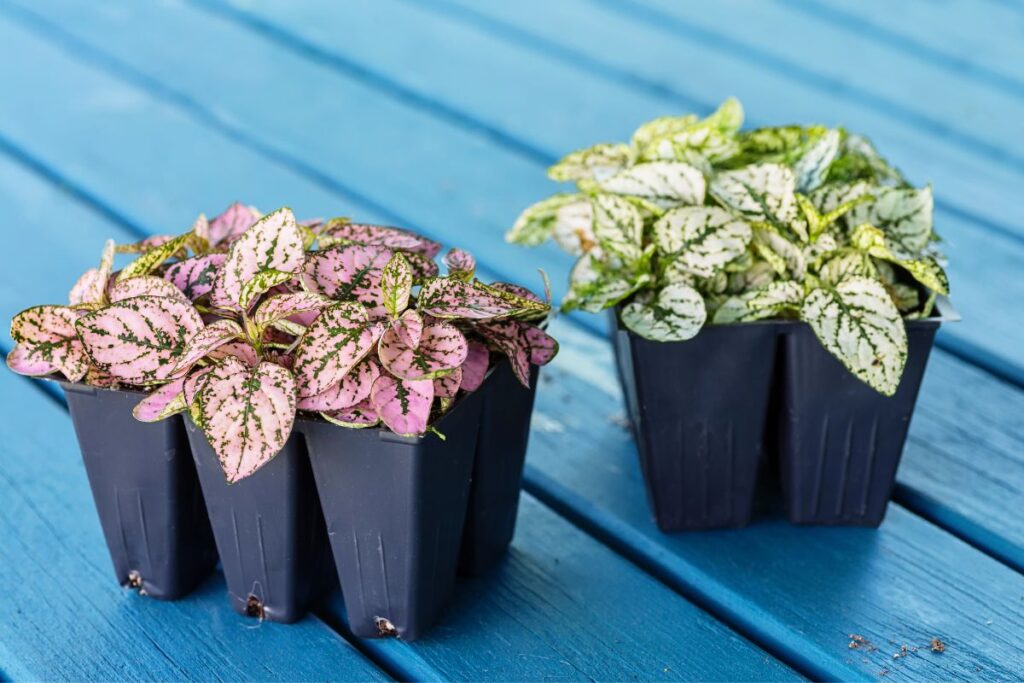
The Polka Dot Plant, with its unique spotted foliage, is sure to add a pop of color and texture to any indoor space. This plant thrives in indirect light and requires moist soil. For best results, create a humidity dome by covering your terrarium with plastic wrap after watering the soil. Propagation of the Polka Dot Plant can be done using stem cuttings or division of existing plants. It’s important to keep in mind that this plant needs regular pruning in order to maintain proper shape and growth rate. When selecting a container for your Polka Dot Plant, look for something that will provide adequate drainage and room for growth as the plant matures. The benefits of growing this plant are numerous: it helps purify air quality in enclosed spaces; it adds visual interest; it’s easy to care for and propagate; and its unique spotted foliage complements many other types of plants in terrariums.
Peacock Plant
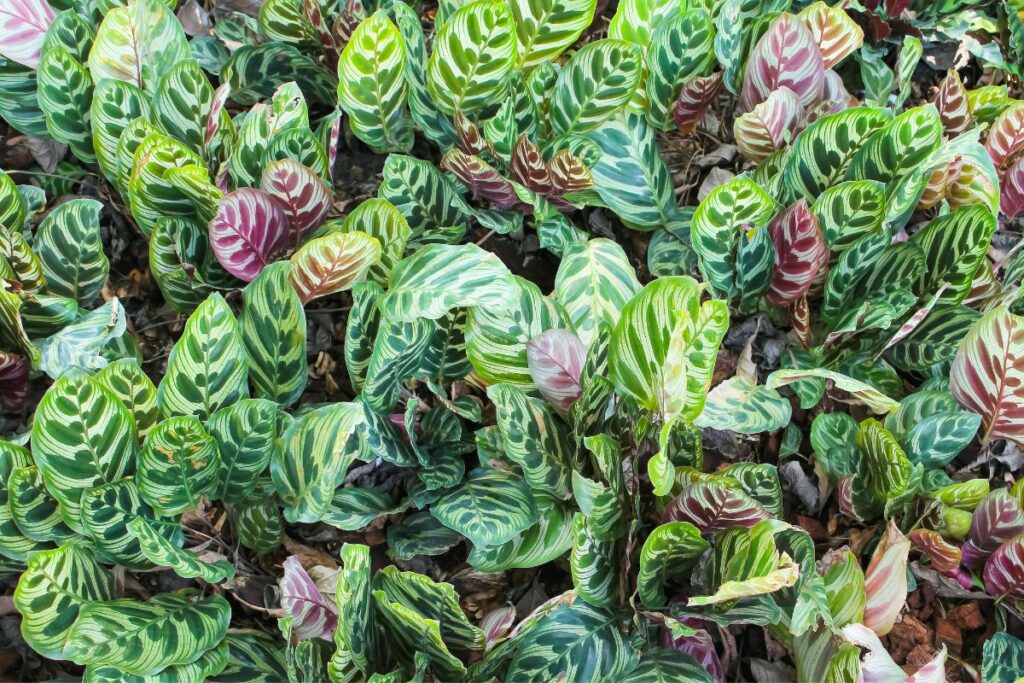
Moving on from the colorful Polka Dot Plant, let’s switch gears and talk about the lush, eye-catching Peacock Plant. This plant is easy to care for and propagates easily with a few tips. Growing peacock plants can be done indoors or outdoors; if planted outside, they will need partial to full shade in order to thrive. When caring for this plant, ensure its soil remains moist but not overly wet as this could lead to root rot. Additionally, when planting peacock plants make sure that you use well-draining soil and potting containers with drainage holes at the bottom so that water does not become stagnant. Furthermore, if you want to propagate your peacock plants further you can do so through leaf cuttings – just remember to keep them away from direct sunlight while they are rooting! Finally, keep an eye out for any potential diseases such as powdery mildew which can affect the growth of your peacock plant. With these tips in mind, you’re sure to have a healthy and thriving Peacock Plant!
English Ivy
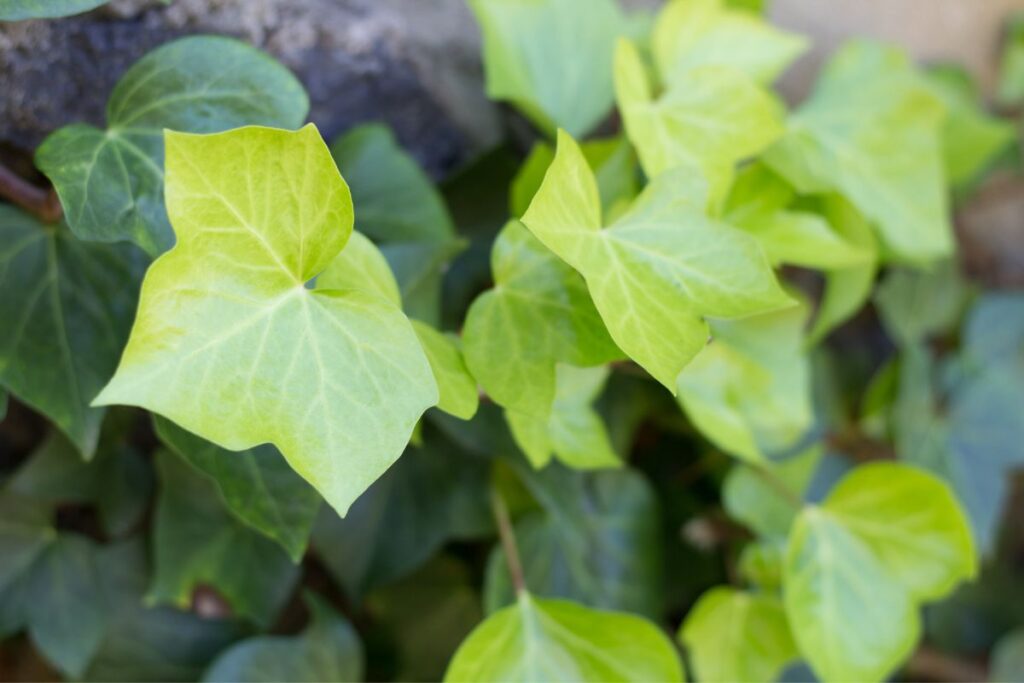
Cascading gracefully over the sides of planters, English Ivy is a popular houseplant that can thrive in many environments. With some simple care, you can have lush foliage for your terrariums. When propagating English Ivy, it’s important to take cuttings from healthy plants and put them in water or directly into the soil. For terrariums specifically, using an organic potting mix and planting cuttings that are about 6 inches long will help keep the ivy growing strong. To prevent pests like aphids or mealybugs, misting the leaves with a mixture of water and neem oil should keep these critters away. There are many varieties of English Ivy to choose from; some have more variegated leaves than others or even purple stems. So be sure to pick one that fits best with your terrarium’s aesthetic!
Maidenhair Vine
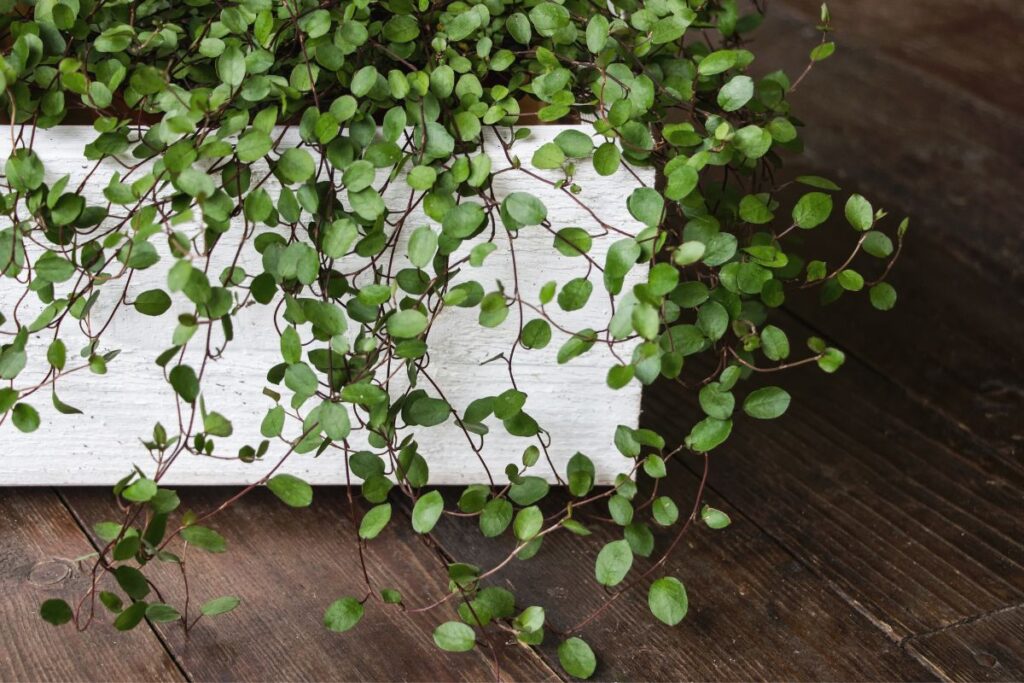
Moving away from English Ivy, let’s take a look at Maidenhair Vine. This is an especially attractive and interesting plant that will add a unique touch to any terrarium setting. Growing and caring for this vine requires attention to detail but the benefits are worth it! With proper Maidenhair Vine care, you can expect your terrarium to be filled with lush green foliage and vibrant blooms. To get started, here are some helpful tips for growing and propagating Maidenhair Vine: provide plenty of soil moisture, provide adequate sunlight or artificial lighting, use an airy potting mix for propagation, and avoid overwatering. In addition to these tips, there are also several challenges when it comes to caring for this plant such as pests like mealybugs or aphids and leaf yellowing due to too much water or not enough light. However, with the right knowledge of how best to care for your Maidenhair Vine, you can ensure success in your terrariums!
Mother Fern
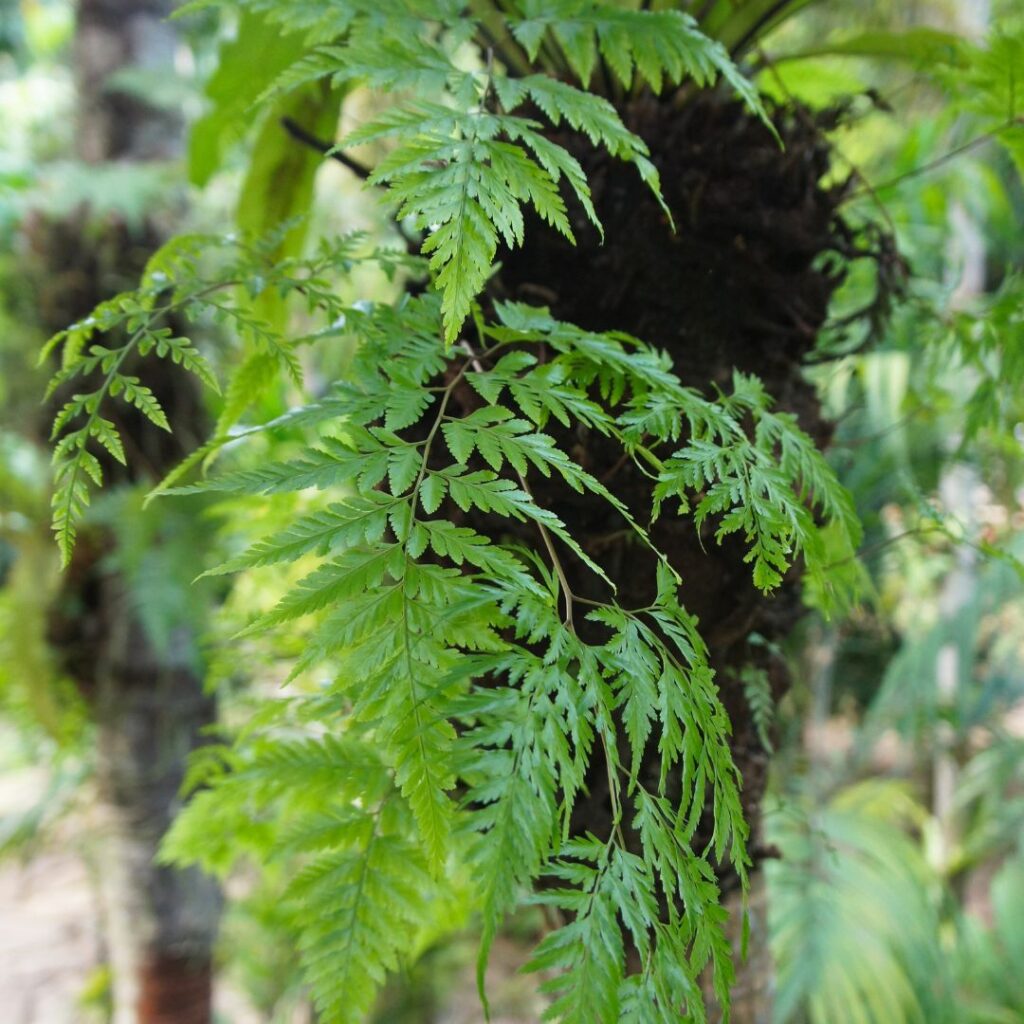
If you’re looking for a unique addition to your terrarium, the Mother Fern is an ideal choice! This small fern boasts bright green foliage and requires minimal care for upkeep. It does best in partially shaded areas with high humidity, so it’s perfect for enclosed spaces like terrariums. When given the right nutrition and soil, it will propagate easily and spread throughout your container garden. In addition to its easy maintenance requirements, this plant also offers many benefits – from purifying the air to creating a lush atmosphere. With proper fern care and nutrition, you can have a beautiful terrarium full of Mother Ferns that will last for years!
Aquamarine Pilea
Experience the beauty of a captivating Aquamarine Pilea as it adds a touch of vibrancy to your terrarium! This plant, with its unique shape and vibrant aquamarine coloring, is sure to bring life to any space. When caring for an Aquamarine Pilea, make sure you are aware of its light requirements; it needs bright indirect light but not too much exposure to direct sunlight. Additionally, it prefers well-draining soil with plenty of organic matter added. Proper propagation techniques are also important for this plant; consider taking cuttings or division when propagating. Lastly, be mindful of potential pests that may affect the health of your Aquamarine Pilea; regular inspection and proper pest control will ensure that your terrarium stays healthy. With adequate care, you can enjoy the beauty and vibrancy of this beautiful plant in your own terrarium!
Spider Plant
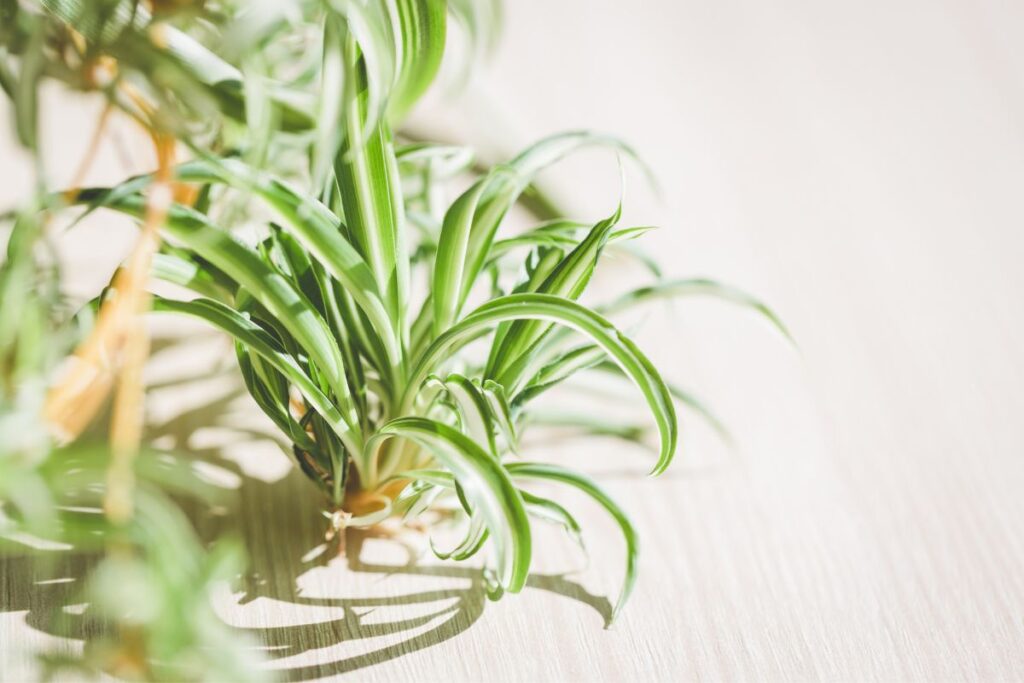
Bring your terrarium to life with the addition of a Spider Plant! Not only is this plant aesthetically pleasing, it’s also easy to care for and propagate. Its spreading tendrils give it its namesake, as do its unique patterned leaves. To keep your spider plant healthy, fertilize it once a month with liquid fertilizer or a slow-release granular fertilizer during the spring and summer months. Propagating the plant is also simple; simply pluck off an individual stem and place it in water until roots form before transferring it to the soil. Finally, be sure to water your spider plant frequently while avoiding over-watering as this could lead to root rot. With these tips in mind, you can enjoy growing and caring for your very own Spider Plant!
Miniature Orchid
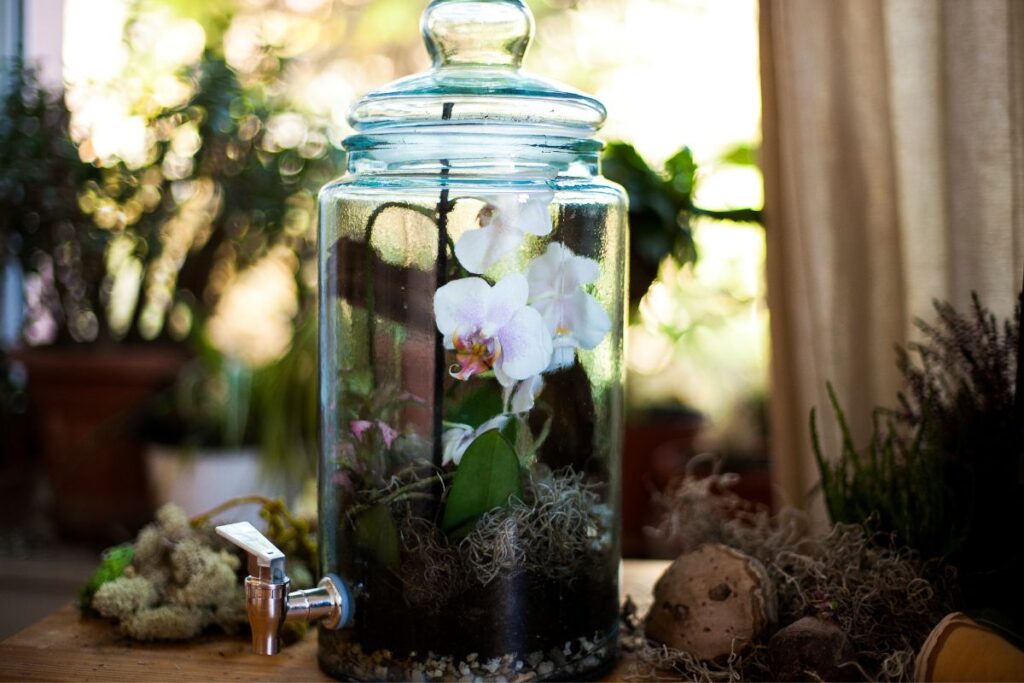
Moving on from the Spider Plant, let’s take a look at another popular choice for terrariums – the Miniature Orchid. These beautiful little flowers come in many different species, colors, and varieties, making them a great choice when looking to add some color and life to your terrarium. With proper care and attention, you’ll be able to enjoy their delicate blooms for years to come. There are many different types of orchids available, so you’re sure to find one that meets your needs. Whether you choose an exotic variety with vibrant colors or a more subtle variety with pastel hues, there is something special about these miniature plants that will bring beauty and joy into your home.
Conclusion
Congratulations! You’ve just built yourself a beautiful terrarium full of miniature plants. With this selection of 25 best miniature plants, you can create a unique, vibrant ecosystem that will bring life and color to your home. From the Nerve Plant to the Miniature Orchid, these plants are sure to add beauty and joy to any space for years to come. So take your time and enjoy building your terrarium—your masterpiece awaits!
